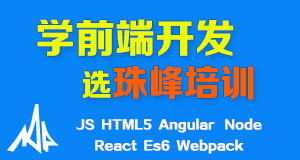学习并运用JavaScript的原生函数
简介
尽管 JavaScript 总是让人产生误解,但是它已经成为了最流行的编程语言之一。理解 JavaScript 的内在原理很困难。同样的,迫使 JavaScript 成为常规规范,如面向对象或函数编程,同样具有挑战性。这里我强调阐明 JavaScript 核心部分的原生函数。
在这篇文章中,我将讨论以下几种行为:
- Call/Apply
- Bind
- Map
- Filter
首先我会定义这个函数(利用Mozilla的声明方式),然后提供一个例子,最后实现此函数。
为了解释这些行为,我需要先解释一下复杂的 this 关键字以及类似数组的 arguments 对象。
this 和 arguments 对象
JavaScript 的作用域是基于函数而言的,术语一般称为作用域,变量和方法的作用域都是当前函数。此外,函数执行的作用域是他们被定义的作用域而不是执行的作用域。如果你想了解更多有关于作用域的知识,可以参考你应该知道的4种 JavaScript 设计模式这篇文章。this对象引用当前函数的上下文并且可以以多种方式被调用。例如,它可以被绑定到 window 对象(全局作用域)。
this.globalVar = {
myGlobalVarsMethod: function (){
// Implementation
}
};
console.log(this.globalVar); // { myGlobalVarsMethod: [Function] }
并且变量可以绑定到已存在的函数中,如下:
this.globalVariable = 'globalVariable';
function globalFunction (){
this.innerVariable = 'innerVariable';
console.log(this.globalVariable === undefined); // false
console.log(this.innerVariable === 'innerVariable'); // true
return {
innerFunction: function () {
console.log(this.globalVariable === undefined); // true
console.log(this.innerVariable === undefined); // true
}
}
}
globalFunction().innerFunction();
这里存在被绑定到每一个调用函数的 this 对象。严格模式下,如果变量未定义就会抛出异常/错误( TypeErrors )。在生产环境下严格模式者会被优先考虑;然而,我故意选择不使用此模式以避免抛出异常。下面是严格模式下的一个简单例子:
this.globalVar = 'globalVar';
function nonStrictFunctionTest () {
return function () {
console.log(this.globalVar); // globalVar
}
}
function strictFunctionTest () {
'use strict'; // Strict Mode
return function () {
console.log(this.globalVar); // TypeError: Cannot read property 'globalVar' of undefined
}
}
nonStrictFunctionTest()();
strictFunctionTest()();
可能很多 JavaScript 开发人员不知道,创建函数时会有一个arguments对象。这是一个类似数组的对象(仅具有属性的长度)。arguments主要有三个属性,即callee(调用方法),length,和caller(调用函数的参考)。
在一个函数中声明变量参数会替换/覆盖原先的参数对象。
如下列出的一些参数对象:
function fn (){
console.log(typeof arguments); // [object Object]
console.log(arguments[0]); // DeathStar
console.log(arguments[1]); // Tatooine
arguments.push("Naboo"); // TypeError: undefined is not a function
var arguments = "Star Wars";
console.log(arguments[5]); // W
}
fn("DeathStar", "Tatooine");
按照如下所示,用 arguments 创建一个数组:
var args = Array.prototype.slice.call(arguments);
Call/Apply
无论 call 还是 apply 都是调用对象的一个方法。关于使用点操作符,call 和 apply 都接受其作为第一个参数。如上所述,每一个函数都保持在其所定义的特定作用域内。因此,当你调用对象时必须考虑到函数的作用域。
Mozilla 浏览器的apply和call调用声明如下所示:
fun.apply(thisArg, [argsArray])
fun.call(thisArg[, arg1[, arg2[, ...]]])
通过传递 thisArg 参数,在特定的上下文中,被调用的函数可以访问或修改对象。下面的例子阐明了 call 的使用。
this.lightSaberColor = 'none';
var darthVader = {
team: 'Empire',
lightSaberColor: 'Red'
};
var printLightSaberColor = function(){
console.log(this.lightSaberColor);
}
printLightSaberColor() // none
printLightSaberColor.call(darthVader); // Red
printLightSaberColor.apply(darthVader); // Red
注意:第一次调用默认为全局作用域(window),然而,第二次为 darthvader。
call 和 apply 主要的区别在于他们的声明方式不同。call 需要参数分开传递,而 apply 需要传入由参数组成的数组。我是这样记忆的:“Apply uses an Array。”当你的程序无关乎参数数目时,apply 方法可能会更加适用。
Currying(柯里化)(部分函数应用)是应用 call 和 apply 的一个函数式编程。Currying 允许我们创建返回已知条件的函数。这里是一个 currying 函数:
var curry = function(fun) {
// nothing to curry. return function
if (arguments.length < 1) {
return this;
}
// Create an array with the functions arguments
var args = Array.prototype.slice.call(arguments, 1);
return function() {
// *Apply* fn with fn's arguments
return fun.apply(this, args.concat(Array.prototype.slice.call(arguments, 0)));
};
};
// Creating function that already predefines adding 1 to a
function addOneToNumber(a) {
console.log(1 + a);
}
// addOneCurried is of function
var addOneCurried = curry(addOneToNumber);
console.log(addOneCurried(10)); // 11
虽然 arguments 不是数组,但是 Array.prototype.slice可以将类数组的对象转换成新数组。
Bind
bind方法用于明确指定调用 this 方法。在作用域方面,类似于 call 和 apply 。当你将一个对象绑定到一个函数的 this对象时,你就会用到 bind。
如下是bind的声明:
fun.bind(thisArg[, arg1[, arg2[, ...]]])
通俗地说,我们是通过 bind 向函数 fun 传递 thisArg 参数。实质上就是每次 fun 函数都必须通过传递 thisArg 参数调用 bind 方法。让我们在一个简单的例子中仔细看看。
var lukeSkywalker = {
mother: 'Padme Amidala',
father: 'Anakin Skywalker'.
}
var getFather = function(){
console.log(this.father);
}
getFather(); // undefined
getFather.bind(lukeSkywalker)(); // Anakin Skywalker
getFather(lukeSkywalker); // undefined
第一个getfather()返回值为 undefined 是因为在这里 father 属性没有被定义。那这时 this 代表什么呢?只要我们不明确的指定它,它就代表 window 的全局对象。第二个getfather()返回 “Anakin Skywalker”是因为getfather()中的 this 指代的是 lukeskywalker。许多Java/C++ 开发人员会设想最后一个getfather()的调用将返回预想的结果–虽然再次返回全局对象。
如下这里是 bind 的实现原理:
Function.prototype.bind = function(scope) {
var _that = this;
return function() {
return _that.apply(scope, arguments);
}
}
这里 JavaScript 的作用域是合乎逻辑的,返回函数的 this 对象是不同于 bind 的 this 对象的。因此,将 this 暂时缓存给变量 _that 保证了其正确的作用域范围。否则,this.apply(scope,arguments) 将会未定义。
Map
JavaScript 的 map 函数是遍历数组,同时转换每个元素的函数编程技术。它用 modified 元素创建了一个新数组并以回调的方式返回。关于我提到的修改或转换元素,实践表明,如果元素是对象(而不是原语),这只是克隆对象并不是从物理上改变了原生的。
以下是该方法的声明:
arr.map(callback[, thisArg])
回调方法有三个参数,即 currentValue,index,和 array。
这里是一个有关于 map 的简单例子:
function Jedi(name) {
this.name = name;
}
var kit = new Jedi('Kit');
var count = new Jedi('Count');
var mace = new Jedi('Mace');
var jedis = [kit, count, mace];
var lastNames = ['Fisto', 'Dooku', 'Windu'];
var jedisWithFullNames = jedis.map(function(currentValue, index, array) {
var clonedJedi = (JSON.parse(JSON.stringify(currentValue))) // Clone currentValue
clonedJedi.name = currentValue.name + " " + lastNames[index];
return clonedJedi;
});
jedisWithFullNames.map(function(currentValue) {
console.log(currentValue.name);
});
/**
Output:
Kit Fisto
Count Dooku
Mace Windu
*/
了解了 map 是用来做什么的,让我们看一下它具体是如何实现的:
Array.prototype.map = function (fun, thisArg) {
if(typeof fun !== 'function') {
throw new Error("The first argument must be of type function");
}
var arr = [];
thisArg = (thisArg) ? thisArg : this;
thisArg.forEach(function(element) {
arr[arr.length] = fun.call(thisArgs, element);
});
return arr;
}
注:这是一个简单的实现。到 ECMAScript 5看全部的实现,并查阅其规范。
Filter
filter 方法是数组的另外一种表现行为。类似于 map,filter 返回一个新的数组并接受一个函数和一个可选的 thisArg 参数。然而,返回的数组仅包含适合在回调函数测试的特定条件的元素。回调函数必须返回一个 Boolean –返回 true 的元素才会被接受并插入到返回的数组。
关于 filter 有许多应用,包括选择偶数,用一个特定的属性选择对象,或选择有效的电话号码。
这里是其中一种声明方法:
arr.filter(callback[, thisArg])
同样的,thisArg 是可选的参数并且回调函数接受三个参数,currentValue,index 和 array。
这里是一个有关于 filter 的例子:
function Person(name, side) {
this.name = name;
this.side = side;
}
var hanSolo = new Person('Han Solo','Rebels');
var bobaFett = new Person('Boba Fett','Empire');
var princessLeia = new Person('Princess Leia', 'Rebels');
var people = [hanSolo, bobaFett, princessLeia];
var enemies = people.filter(function (currentValue, index, array) {
return currentValue.side === 'Empire';
})
.map(function(currentValue) {
console.log(currentValue.name + " fights for the " + currentValue.side + ".");
});
/**
Output:
Boba Fett fights for the Empire.
*/
有趣的是,array 方法可以创造有趣的,复杂的操作。
最后,让我们看看 filter 的实现:
Array.prototype.filter = function(fun, thisArg) {
if(typeof fun !== 'function') {
throw new Error("The first argument must be of type function");
}
var arr = [];
thisArg = (thisArg) ? thisArg : this;
thisArg.forEach(function(element) {
if (fun.call(thisArg, element)) {
arr[arr.length] = element;
}
});
return arr;
};
这里是 ECMAScript 的实现规范。
总结
还有更多令人困惑但是很有用的原生函数。它们是值得用数组和函数来回顾其中的每一种方法。
希望这篇文章可以有助于你理解 JavaScript 的内部原理和词法作用域。尽管与实践紧密相连,call、apply,和bind 还是很难把握的。为了避免传统的循环技术你可以尝试使用 map 和 filter 方法 。
本文根据@DEVAN PATEL的《Learning JavaScript Native Functions and How to Use Them》所译,整个译文带有我们自己的理解与思想,如果译得不好或有不对之处还请同行朋友指点。如需转载此译文,需注明英文出处:https://scotch.io/tutorials/learning-javascript-native-functions-and-how-to-use-them。
如需转载,烦请注明出处:http://www.w3cplus.com/JavaScript/learning-javascript-native-functions-and-how-to-use-them.html







